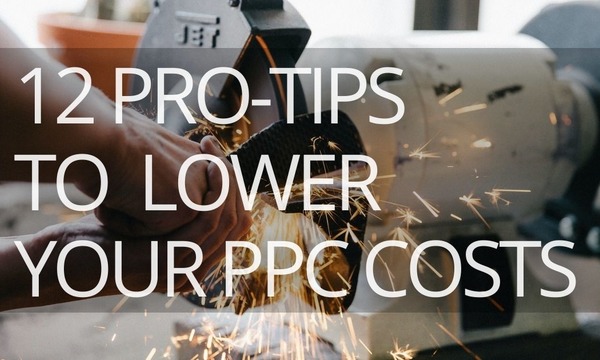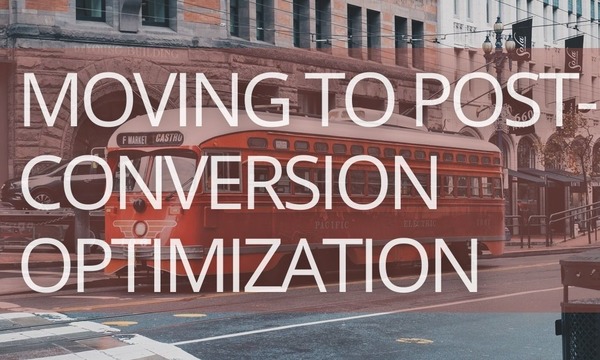Intro: Conversion value rules in a nutshell
Do you consider online advertising a crucial aspect for your business to reach your target audience as best as you can and ensure conversions? Are you looking for ways to effectively manage and optimize your advertising spend to achieve the best ROI possible? Great news! Google has introduced conversion value rules to customize reporting, optimize smart bidding, and better reflect the value of conversions based on various factors.
In this article, we will delve into the details of conversion value rules and how to use them to achieve advertising goals. We will explore the benefits and conditions of conversion value rules as well as tips for using them. So, if you want to make the most of your ad spend, keep reading to discover the benefits of Google’s conversion value rules and how you can use them to your benefit.
What are Conversion Value Rules
Google Ads has introduced conversion value rules as a new feature to help advertisers assign a specific value to criteria-based conversions. Instead of assigning a blanket value to all conversions, advertisers can now differentiate between high-value and low-value conversions. By knowing which conversions are more valuable to your business, it’s easy to focus on driving those specific types of conversions that result in a higher ROI.
Conversion value rules vary depending on business type, industry, and marketing goals. One of the most common conversion value rules is the attribution model, which defines the marketing touchpoints to consider for a conversion. Another important rule is the conversion window, which refers to the period of time that tracks conversion and associates it with a specific marketing activity.
The type of conversion also plays a role in determining its value. A sale has a higher conversion rate than a website visit because it directly generates revenue for the business. The quality of the conversion is also an important factor in determining its value. A customer who makes large or repeat purchases has a higher conversion rate than others.
Conversion Value Rules Сonditions
Conversion value rule conditions are used to determine the effectiveness of an ad campaign. These criteria are based on the conversion value of a specific action, such as a purchase or lead generation, and help marketers measure ROI for their efforts. This concept is closely related to conversion rate. However, while conversion rate focuses on the number of conversions, conversion value takes into account the quality and monetary value of those conversions.
Key conditions may include cost of the product or service, customer lifetime value and profit margin. The cost of customer acquisition refers to the amount of money it takes to acquire a new customer, which can vary depending on the marketing efforts and channels used. The timing of conversions also plays a role in determining conversion value, as well as the frequency of purchases made by a customer.
By understanding the conversion value of each action, marketers can make data-driven decisions on where to allocate the budget and which campaigns generate the best ROI. By analyzing the conditions that lead to a high conversion value, marketers can identify strategies or tactics that work well and replicate them in future campaigns. For a campaign with low conversion value, areas that need to be optimized to achieve better results will be identified.
Benefits of Using Conversion Value Rules in Google Ads
Here are some key benefits of using the new conversion value rules in Google Ads:
1. Optimization
New conversion value rules allow businesses to assign a monetary value to each conversion for a better understanding of the actual revenue generated from their ads. This helps companies make more informed decisions about optimizing their campaigns and allocating budgets.
2. Customization
New conversion value rules allow companies to vary the value for different types of conversions to get a more granular understanding of ad performance. This level of customization helps companies focus on the best conversions for their business and adjust their bidding strategies accordingly.
3. Bidding
New conversion value rules allow businesses to assign different values to various conversions for their bid optimization. This can help companies maximize their ROI and achieve their desired cost-per-acquisition goals.
4. Tracking
New conversion value rules allow businesses to track the value of each conversion for a better understanding of their customer behavior and their actions. This information is useful for optimizing advertising messages, landing pages, and overall marketing strategies.
5. Integration
New conversion value rules allow businesses to track the value of conversions beyond online marketing channels. Integration with third-party tracking tools, such as Google Analytics or CRM systems, provides a more complete picture of the customer journey and the impact of the ad campaigns. It helps businesses track offline conversions, such as phone calls or in-store purchases that may have been influenced by their online ads.
How Conversion Value Rules Works
Conversion value rules in Google Ads provide businesses with a powerful tool to track and measure the real value of their conversions, leading to more efficient advertising strategies. The level of customization allows you to accurately measure the ROI of your ad campaigns and make informed decisions on how to optimize your efforts for maximum success. There is importance of rules and actions concept. Every created rule should consist of an action, which is made up of an operation and a value. This action provides Google with guidance on how to adjust the conversion value for any rules that meet the specified conditions.
Once you have established a conversion value rule, you need to create a set of conversion value rules consisting of conversion value rules and action categories. A conversion action category is a list of specific conversion actions that the rule set will apply to. With a clear understanding of how rules and actions work together, you can optimize your conversion tracking and ultimately improve the overall success of your ad campaigns.
The rules help you track the success of certain campaigns or keywords by assigning different values to conversions coming from those sources. Understanding which campaigns or keywords generate best conversions allows you to adjust your strategy accordingly. Conversion value rules are customizable to suit your business needs and goals. You can set rules based on different customer segments, locations, devices, or any other factors that are important to your business.
How to Apply Conversion Value Rules
When it comes to using the rules, Google allows you to apply only one rule per conversion. Multiple rules applied to an impression causes confusion and potentially impacts the accuracy of the conversion data. First of all Google determines the best rule for the impression. This means location targeting of the rule is compared to the location of the impression. A rule with the exact match will be chosen. If multiple rules match the same location, Google will then move on to the next criteria for choosing a rule.
The next rule is customer-based criteria. If a rule has a customer match, it will be prioritized. Targeting a specific customer indicates a higher level of intent and relevance, increasing the likelihood of conversion. Google also considers remarketing and similar audiences when choosing a rule. If a rule targets a specific audience that has previously interacted with the brand, it will be given priority.
Google also makes a point of using affinity and in-market audiences in a rule. Affinity audiences consist of people with similar interests. In-market audiences include people actively searching or intending to purchase a certain product or service. If a rule targets one of these audiences, it will be given preference, because these audiences have demonstrated higher levels of interest and intent, making conversion more likely.
Google also considers detailed demographics when selecting a rule, such as age, gender, and income. If a rule is targeting a specific demographic that is highly relevant to the brand’s product or service, it will be prioritized, because targeting a specific demographic indicates a higher level of relevance and potential for conversion.
How to Use Conversion Value Rules in Google Ads
Here are some best practises for using conversion value rules in Google Ads:
Conversion value rules based on audience
The device or geography condition will be applied to all selected audiences. If you select both a desktop and mobile segment, and target desktop users in the secondary condition, only desktop users under audience segment criteria will be eligible for the conversion value adjustment. This stands for a more targeted and specific adjustment for your relevant audience, ensuring that the conversion value rule is applied to the right users at the right time.
You can set a specific conversion value adjustment for each audience segment to provide a personalized experience for each segment. This helps optimize your ad spend, and improves the overall customer experience by providing relevant and valuable content to each audience segment. Conversion value rules based on Google Ads audience segments allow you to effectively reach your target audience and generate more valuable conversions.
Conversion value rules based on geography
Conversion value rules based on geography is a crucial aspect of a successful ad campaign. Geography setting as a primary condition ensures that your ads reach the right audience in the right location. Businesses can tailor their ads specifically to the audience geolocation, taking into account any cultural or regional preferences that may exist.
Advanced location settings further refine targeting by controlling the user’s actual location. Businesses can also reach prospects who are not physically located in the targeted area but have shown interest in it.
Targeted approach to geo-based conversion value rules benefits businesses greatly. Maximize your ad budget by showing ads to those who are most likely to convert. By targeting specific locations, you can tailor your messages and offers to better suit your target audience. Geo-based conversion value rules help identify new and emerging markets. By analyzing ad performance in different locations, you can understand where your products or services are in greater demand and adjust your marketing strategy accordingly.
Tips for Using Conversion Value Rules
Here are some tips to keep in mind while using conversion value rules in Google Ads:
- Before setting up conversion value rules, understand the real value of your conversions to assign accurate values to different criteria;
- Test and monitor your conversion value rules regularly to ensure they are working as intended or make adjustments if necessary to improve the accuracy of your rules;
- Use historical data to set up your conversion value rules for better understand the criteria that have resulted in high-value conversions in the past;
- Be specific in your conversion value rules, but keep them simple and clear.
Conclusion
Conversion value rules are a game-changer for advertisers using Google Ads because they provide a more accurate understanding of conversion value and enable better optimization of ad campaigns. They amplify the effectiveness of smart bidding by focusing on the most valuable conversions. Advertisers can be certain they are allocating budget to the most valuable conversions and are aligning their overall bidding strategy with their business goals.
Conversion Value Rules should be used strategically without relying on them as a quick fix for poor performing ad campaigns. These rules should be carefully thought out and aligned with the overall business goals to truly see the benefits of using them. With a well-planned and strategic approach based on the recommendations in this article, conversion value rules can become a competitive advantage for businesses looking to increase conversion value and increase profits.





